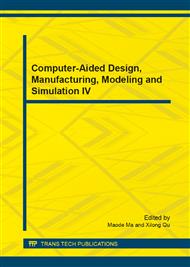p.844
p.850
p.855
p.860
p.865
p.870
p.875
p.880
p.885
Short Time Interval Measurement Method Based on Compensation
Abstract:
In this paper, we use a compensation method of the measured short interval to improve the measurement accuracy by two groups of multiplex. By using two groups of multi-channel monostable pulse signal as a compensation signal, we respectively compensate time difference between the starting/ending measured short time interval and the reference signal. Pulse width of each compensation signal is uniform increasing and incremental sum is a reference signal cycle. We select the average value of two compensation signals pulse width as the beginning and the end of the time difference when the reference signal value jumps after compensation. Then according to the number of reference signal and two compensation time difference we can obtain measured short time interval. Error analysis and evaluation of uncertainty measurement show that the precision of this method is decided by pulse width increment of adjacent compensation signals. The experimental data shows that the method effectively reduces the measurement error of one reference signal cycle in the measurement of time interval.
Info:
Periodical:
Pages:
865-869
Citation:
Online since:
October 2014
Authors:
Keywords:
Price:
Сopyright:
© 2014 Trans Tech Publications Ltd. All Rights Reserved
Share:
Citation:


